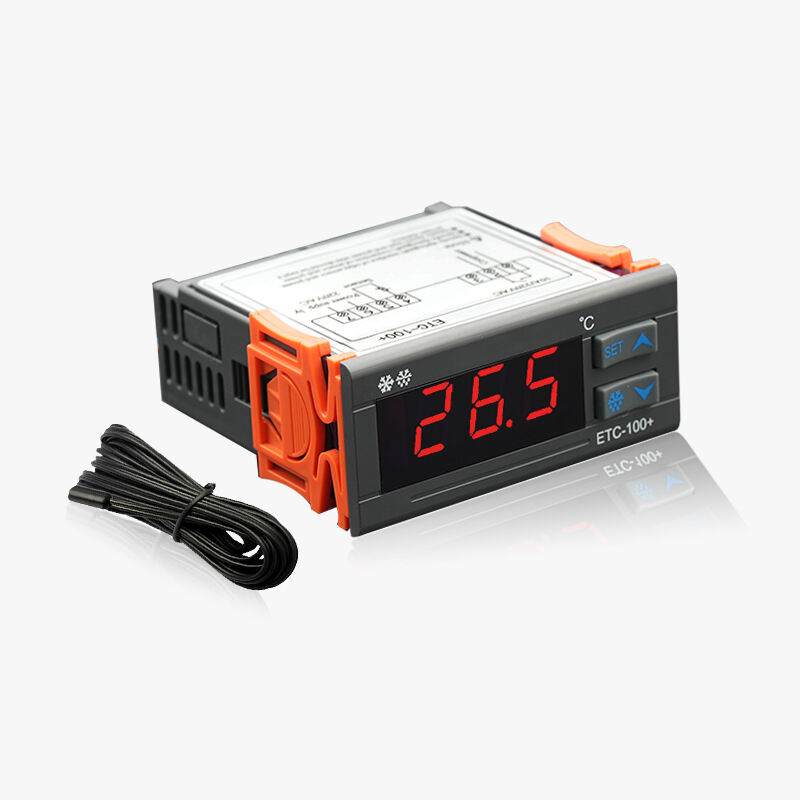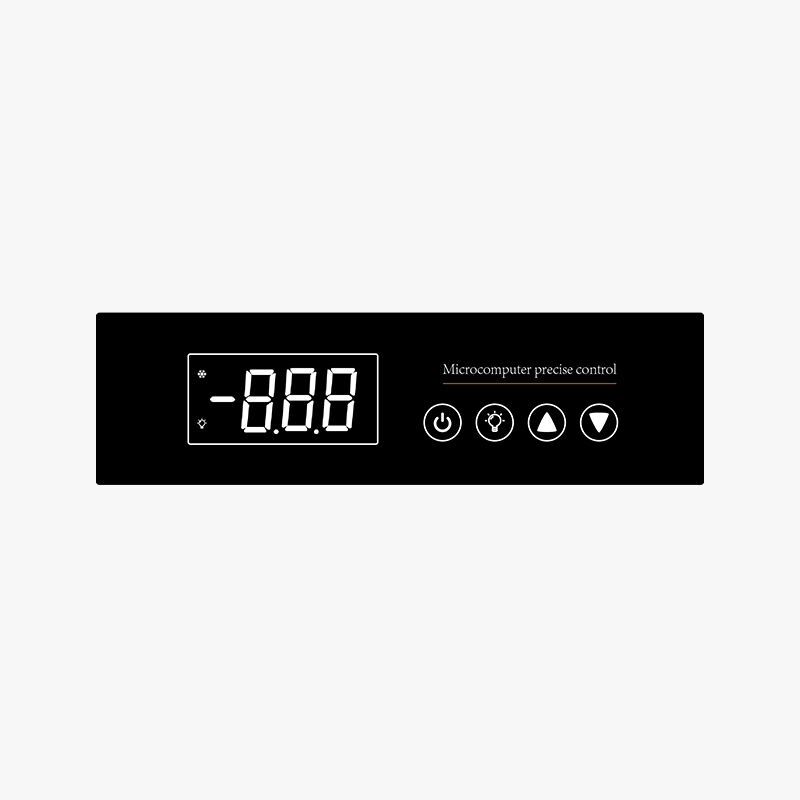Understanding the Critical Role of Temperature Management in Food Protection
Temperature control stands as one of the most fundamental pillars in maintaining food safety across the entire food supply chain. From production and processing to storage and service, proper temperature management can mean the difference between safe consumption and potentially dangerous foodborne illness outbreaks. As food service professionals and handlers, maintaining appropriate temperature control is not just a regulatory requirement—it's an essential responsibility that directly impacts public health.
The relationship between temperature and food safety is intricate and scientifically proven. Microorganisms that cause food spoilage and foodborne illnesses thrive within specific temperature ranges, making temperature control food safety protocols critical in preventing their growth and multiplication. Understanding and implementing these protocols effectively requires both knowledge and dedication to consistent monitoring practices.

The Science Behind Temperature Control and Microbial Growth
Understanding the Temperature Danger Zone
The temperature danger zone, spanning from 40°F to 140°F (4°C to 60°C), represents the range where harmful bacteria multiply most rapidly. Within this range, bacterial populations can double in as little as 20 minutes. This makes temperature control food safety measures particularly crucial during food preparation and service phases. Foods left within this danger zone for more than two hours significantly increase the risk of bacterial growth and potential foodborne illness.
Professional food handlers must be especially vigilant about monitoring time and temperature relationships, ensuring that foods move through the danger zone as quickly as possible during necessary processing steps. This includes proper thawing procedures, cooking processes, and cooling methods that minimize the time food spends in these risky temperature ranges.
The Impact of Temperature on Different Types of Microorganisms
Different pathogens respond uniquely to various temperature conditions. Some bacteria can survive freezing temperatures, while others are destroyed by proper cooking temperatures. Understanding these relationships helps in implementing effective temperature control food safety strategies. For instance, while refrigeration slows bacterial growth, it doesn't eliminate existing bacteria, underlining the importance of proper initial handling and storage.
Certain hardy bacteria can form spores that survive even high cooking temperatures, which is why proper cooling and storage procedures are equally important as cooking protocols. This comprehensive understanding of microbial behavior at different temperatures forms the foundation of effective food safety management systems.
Essential Temperature Control Equipment and Tools
Calibration and Maintenance of Temperature Monitoring Devices
Accurate temperature measurement is crucial for effective temperature control food safety implementation. Food service establishments must invest in reliable thermometers and temperature monitoring systems, ensuring regular calibration and maintenance. Digital thermometers should be calibrated at least weekly, while analog thermometers might require more frequent checking.
Professional kitchens should maintain calibration logs and establish clear procedures for thermometer use and cleaning. This includes using appropriate sanitizing methods between temperature readings of different foods to prevent cross-contamination. Regular staff training on proper thermometer use and calibration techniques ensures accurate temperature monitoring across all food handling operations.
Advanced Temperature Monitoring Systems
Modern technology has revolutionized temperature control food safety practices through automated monitoring systems. These systems provide continuous temperature tracking, instant alerts for deviations, and detailed documentation for compliance purposes. Wireless sensors can monitor multiple points throughout storage areas, sending real-time data to central monitoring stations.
Implementing these advanced systems can significantly improve food safety management by providing detailed temperature histories, reducing human error, and enabling prompt corrective actions when temperature violations occur. The initial investment in such technology often pays off through improved efficiency and reduced food waste.
Best Practices for Temperature Control During Food Preparation
Proper Thawing Procedures
Safe thawing is a critical aspect of temperature control food safety. The four approved methods include thawing under refrigeration, under cold running water, in the microwave, or as part of the cooking process. Each method requires specific time and temperature monitoring to ensure food safety. Refrigeration thawing, while taking longer, provides the safest method by keeping foods consistently below 40°F.
Planning ahead is essential for proper thawing procedures. Large items may require several days of refrigerated thawing, and this should be factored into preparation schedules. Never thaw food at room temperature, as this allows dangerous bacterial growth in outer layers while the center remains frozen.
Cooking Temperature Requirements
Achieving proper internal cooking temperatures is crucial for food safety. Different foods require different minimum internal temperatures to ensure safe consumption. For instance, poultry must reach 165°F, while ground beef requires 160°F. Using calibrated food thermometers to verify these temperatures is an essential part of temperature control food safety protocols.
Professional kitchens should maintain detailed cooking temperature charts and train staff to regularly check and record internal food temperatures. This includes understanding how to properly insert thermometers and account for temperature rise during resting periods.
Storage Temperature Management Protocols
Cold Storage Guidelines
Proper cold storage is fundamental to temperature control food safety. Refrigerators must maintain temperatures below 40°F, while freezers should operate below 0°F. Regular monitoring and documentation of storage temperatures help ensure consistent compliance with food safety standards. Organization within cold storage units is equally important, allowing proper air circulation and preventing cross-contamination.
Professional kitchens should implement clear protocols for storage unit maintenance, including regular cleaning schedules, door seal checks, and prompt attention to any temperature fluctuations. Loading practices should account for air flow patterns and avoid overfilling units, which can compromise temperature maintenance.
Hot Holding Requirements
Hot foods must be maintained at 140°F or above to prevent bacterial growth. This requires proper hot holding equipment and regular temperature checks throughout service periods. Temperature control food safety in hot holding situations includes monitoring both equipment temperatures and actual food temperatures at regular intervals.
Staff should be trained in proper hot holding procedures, including the use of appropriate equipment, regular stirring of foods to ensure even temperature distribution, and maintaining proper documentation of temperature checks. Understanding the maximum safe holding times for different foods is also crucial for maintaining food safety.
Frequently Asked Questions
How Often Should Temperature Checks Be Performed in Professional Kitchens?
Temperature checks should be conducted at multiple points throughout the day, including upon food delivery, during preparation, cooking, and service. At minimum, cold storage units should be checked at the beginning and end of each shift, while cooking temperatures should be verified for each batch of prepared food. Hot holding temperatures should be monitored every 2-4 hours during service.
What Are the Most Common Temperature Control Violations to Avoid?
Common violations include inadequate cooling procedures, improper hot holding temperatures, leaving food in the danger zone too long during preparation, and failing to properly verify cooking temperatures. Other frequent issues include malfunctioning equipment, poor temperature monitoring documentation, and inadequate staff training on temperature control protocols.
How Can Small Establishments Implement Effective Temperature Control Systems?
Small establishments can implement effective temperature control food safety systems by investing in basic but reliable equipment, establishing clear monitoring procedures, and maintaining detailed temperature logs. Essential tools include calibrated thermometers, proper cold storage units, and hot holding equipment. Training all staff members on proper temperature monitoring and documentation procedures is crucial, regardless of establishment size.
Table of Contents
- Understanding the Critical Role of Temperature Management in Food Protection
- The Science Behind Temperature Control and Microbial Growth
- Essential Temperature Control Equipment and Tools
- Best Practices for Temperature Control During Food Preparation
- Storage Temperature Management Protocols
- Frequently Asked Questions

